Master the Basics of Customer Support Tools in 2025
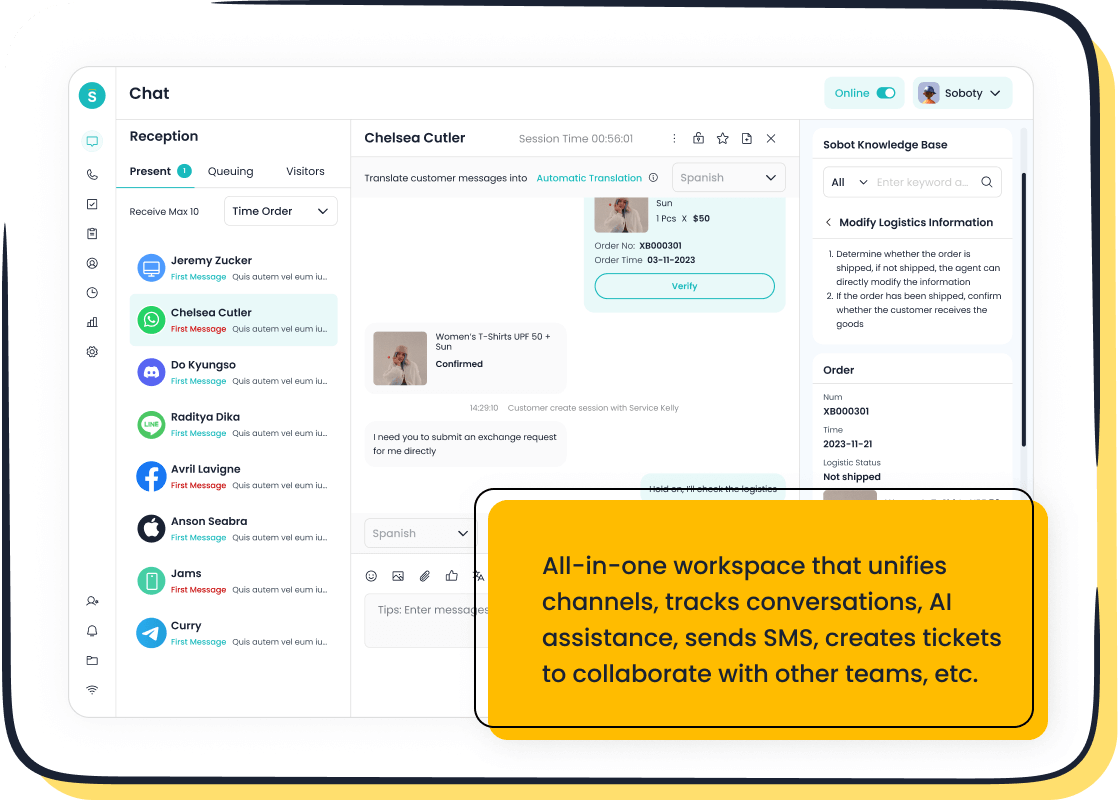
In 2025, the best customer support tools are transforming how businesses deliver high-quality personalized customer experiences. Nearly 90% of customers now expect immediate responses, making speed and efficiency essential in customer support. Tools like Sobot empower businesses to meet these expectations by offering real-time assistance across multiple channels. With features like AI-driven automation and real-time analytics, Sobot enables you to anticipate customer needs and provide tailored solutions. This proactive approach not only enhances satisfaction but also fosters loyalty, ensuring your business stays ahead in a competitive market.
Understanding Customer Support Tools
What Are Customer Support Tools?
Customer support tools are software solutions designed to help businesses manage and improve interactions with their customers. These tools streamline communication, resolve issues efficiently, and enhance the overall customer experience. They include features like ticketing systems, live chat platforms, and knowledge base software.
The effectiveness of these tools can be measured using three key metrics:
- Productivity metrics: These track the volume of work completed, such as ticket volume and resolution rates.
- Performance metrics: These assess how quickly issues are resolved, including average resolution time and first response time.
- Experience metrics: These evaluate customer satisfaction through scores like Net Promoter Score (NPS) and Customer Effort Score (CES).
By using these tools, you can ensure your team delivers consistent and high-quality customer service.
Why Are They Essential for Businesses in 2025?
In 2025, customer expectations are higher than ever. Customers demand fast, personalized, and seamless support across multiple channels. Businesses that fail to meet these expectations risk losing customers to competitors.
The global market for customer experience management was valued at $12.04 billion in 2023 and is projected to grow at a compound annual growth rate (CAGR) of 15.8% from 2024 to 2030. Additionally, 80% of businesses plan to increase their investment in customer experience, recognizing it as a primary competitive factor. Poor customer experiences can lead to significant losses, with 65% of consumers switching brands and global spending losses exceeding $4.7 trillion.


Customer support tools like Sobot Live Chat help businesses stay competitive by offering real-time assistance, omnichannel support, and AI-driven automation. These tools ensure you can meet customer demands while improving efficiency and satisfaction.
Common Features of the Best Customer Support Tools
The best customer support tools share several essential features that make them effective and user-friendly:
- Omnichannel support: Interact with customers across platforms like websites, apps, and social media.
- AI-driven automation: Automate repetitive tasks and provide instant responses to common queries.
- Knowledge management: Create and maintain a centralized knowledge base for self-service solutions.
- Analytics and reporting: Gain insights into customer behavior and team performance.
- Integration capabilities: Seamlessly connect with other systems like CRM software.
For example, Sobot Live Chat offers a unified workspace, AI-powered tools, and built-in analytics. These features help you provide personalized and efficient customer support, ultimately boosting customer satisfaction and loyalty.
Key Types of Customer Support Tools
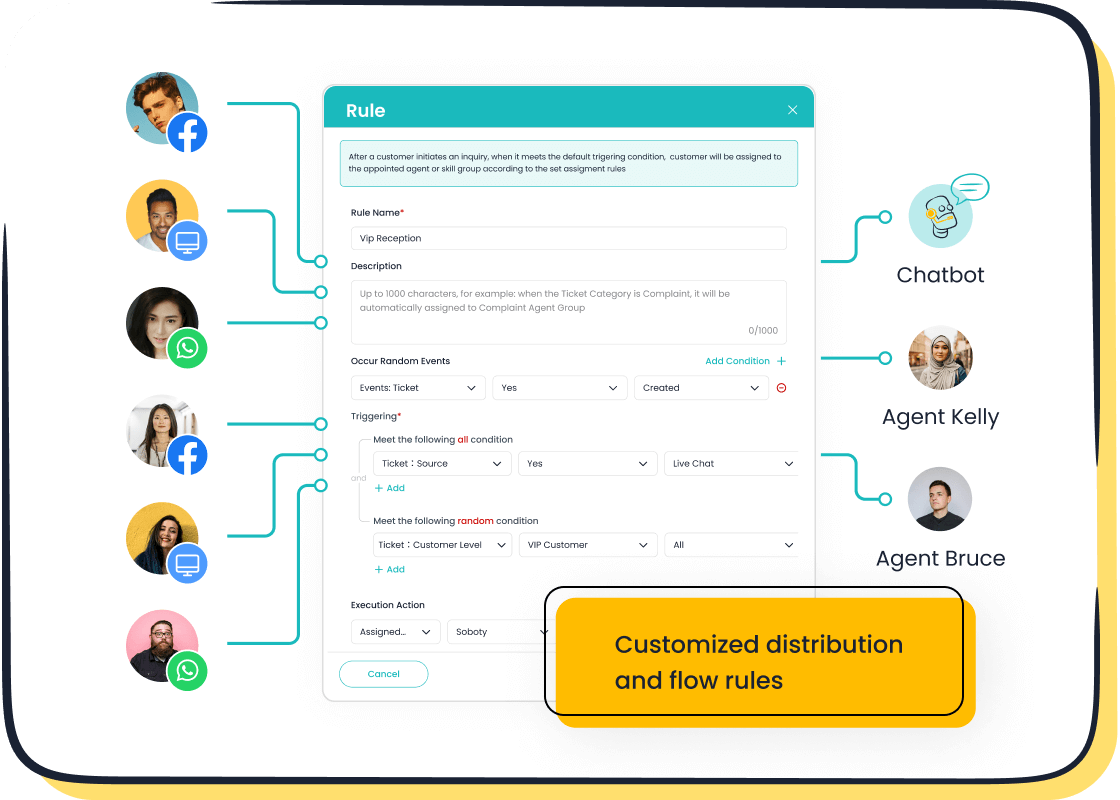
Ticketing Systems for Streamlined Issue Management
Ticketing systems are essential for managing customer inquiries efficiently. These tools organize customer issues into tickets, allowing your team to track, prioritize, and resolve them systematically. By using ticketing systems, you can ensure no customer query goes unanswered.
Metrics like resolution time and first contact resolution rate highlight the effectiveness of ticketing systems. For example:
| Metric | Description |
|---|---|
| Resolution Time | Average time taken to resolve a ticket, indicating efficiency in issue management. |
| Customer Satisfaction Score (CSAT) | Rating given by customers post-resolution, reflecting their satisfaction with the service. |
| Ticket Backlog | Number of unresolved tickets, which can highlight potential issues in the ticketing process. |
| First Contact Resolution Rate | Percentage of tickets resolved in the first interaction, showing the effectiveness of the support team. |
| Agent Performance Metrics | Various metrics assessing individual agent performance, helping identify training needs and strengths. |
Sobot’s ticketing systems stand out by automating workflows and managing SLAs (Service Level Agreements). These features help your team resolve tickets faster and improve customer satisfaction. By integrating with other tools, Sobot ensures seamless ticket management across all channels.
Live Chat Platforms: The Role of Sobot Live Chat
Live chat tools have become a cornerstone of modern customer support. They allow you to engage with customers in real-time, providing instant solutions to their problems. This immediacy not only improves customer satisfaction but also boosts conversion rates.
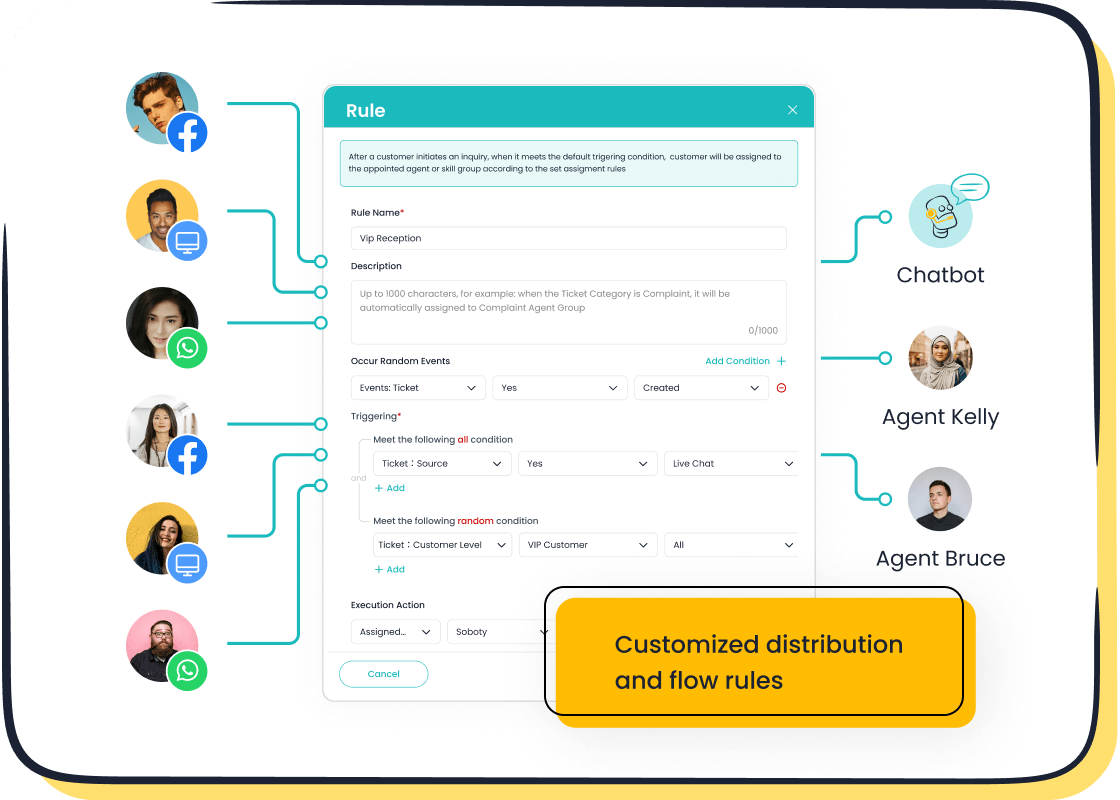
Sobot Live Chat takes live chat tools to the next level. It supports omnichannel communication, enabling you to interact with customers on websites, apps, and social media platforms like WhatsApp and Facebook. With AI-powered tools, Sobot helps your agents respond faster and more accurately. Built-in analytics provide insights into customer behavior, helping you make data-driven decisions. Businesses using Sobot Live Chat have reported a 38% increase in conversion rates, showcasing its effectiveness.
Knowledge Base Software for Self-Service Solutions
A knowledge base is a centralized repository of information that empowers customers to find answers independently. This self-service tool reduces the workload on your support team while improving customer satisfaction.
The benefits of knowledge base software include:
| Benefit | Description |
|---|---|
| Improved Efficiency | Employees can quickly find information without waiting for support, leading to faster ticket responses. |
| Reduced IT Support Costs | A well-maintained knowledge base allows customers to resolve issues independently, reducing ticket volume. |
| Improved Customer Satisfaction | Quick access to solutions enhances customer experience and satisfaction levels. |
Sobot’s knowledge base software integrates seamlessly with its other tools, offering self-service options that are easy to maintain and update. For example, OPPO used Sobot to optimize its knowledge base, reducing maintenance efforts by 90% and achieving an 83% chatbot resolution rate. This demonstrates how a robust knowledge base can transform your customer support strategy.
Customer Service Automation Tools (e.g., Chatbots, AI Assistants)
Customer service automation has revolutionized how businesses handle customer interactions. Tools like chatbots and AI assistants allow you to provide instant, efficient support while reducing the workload on your team. These tools excel at managing routine tasks, such as answering FAQs or guiding customers through simple processes, freeing up your agents to focus on more complex issues.
Chatbots, in particular, have become indispensable. They can handle up to 80% of routine inquiries, saving businesses an estimated 2.5 billion hours of work by the end of 2024. For example, Unity's AI agent reduced ticket volumes by 8,000, saving $1.3 million. Additionally, 68% of users appreciate the speed of chatbot responses, and 61% prefer faster replies from AI over waiting for a human representative.
| Statistic/Case Study | Description |
|---|---|
| 49% | Of U.S. adults interacted with an AI-powered chatbot for customer service. |
| 75% | Of U.S. business owners said AI improved customer experience. |
| 37% | Companies using AI saw a 37% drop in first response times. |

Sobot's AI-powered chatbots stand out with their multilingual capabilities and ChatGPT integration. These features ensure 24/7 availability and personalized interactions, enhancing customer satisfaction. By integrating seamlessly with other tools, Sobot's automation capabilities help you deliver consistent, high-quality service across all channels.
Customer Feedback and Survey Tools
Understanding your customers' opinions is vital for improving your service. Feedback and survey tools provide valuable insights into customer satisfaction, loyalty, and effort. Metrics like CSAT (Customer Satisfaction Score), CES (Customer Effort Score), and NPS (Net Promoter Score) help you measure the effectiveness of your support strategies.
| Metric | Description |
|---|---|
| CSAT | Measures how happy customers are with your service. |
| CES | Assesses how easy it is for customers to complete a task. |
| NPS | Indicates customer loyalty and likelihood to recommend your brand. |
These tools allow you to identify areas for improvement and track progress over time. For instance, Sobot's satisfaction surveys enable you to gather real-time feedback after every interaction. This data helps you refine your approach, ensuring your customers feel heard and valued. By leveraging these insights, you can foster stronger relationships and drive long-term loyalty.
Benefits of Using Customer Support Tools
Enhancing Efficiency and Productivity
Customer support tools streamline operations, allowing your team to handle inquiries faster and more effectively. Metrics like Average Handle Time (AHT) and First Call Resolution (FCR) demonstrate how these tools improve efficiency. For example:
| Metric | Description |
|---|---|
| Average Handle Time (AHT) | Measures the average duration agents take to resolve customer issues. |
| First Call Resolution (FCR) | Indicates the effectiveness of agents in resolving issues on the first contact. |
| Customer Satisfaction Score (CSAT) | Gauges overall customer sentiment following interactions, reflecting service quality. |
Sobot’s customer support automation tools, such as its AI-powered chatbots and ticketing systems, reduce repetitive tasks. This allows agents to focus on complex issues, improving productivity. By integrating these tools, you can ensure faster resolutions and better resource allocation, ultimately enhancing your team’s performance.
Improving Customer Satisfaction and Loyalty
Providing excellent customer support directly impacts customer satisfaction and loyalty. Studies show that 91% of customers who experience poor service will not return, while 33% will switch to a competitor after just one bad experience. On the other hand, 81% of customers are willing to pay more for better customer service.
Sobot’s Live Chat and omnichannel solutions help you deliver seamless, personalized support across platforms. These tools ensure customers feel valued and heard, increasing satisfaction. For every 1% increase in customer satisfaction, retention rates rise by 5%. Companies prioritizing retention over acquisition are also 60% more profitable. By focusing on customer experience, you can build long-term loyalty and drive growth.
Leveraging Data Insights for Better Decision-Making
Customer support tools provide valuable data that helps you make informed decisions. Data-driven decision-making uncovers patterns and trends, clarifying performance and market dynamics. For example:
- Real-time analytics offer actionable insights, enabling you to optimize operations.
- Data fosters transparency and accountability, ensuring decisions are based on objective analysis.
- Advanced analytics reveal customer behavior, helping you tailor your services to meet their needs.
Sobot’s built-in analytics evaluate over 150 indicators, offering detailed reports to guide your strategy. These insights allow you to improve customer experience, refine workflows, and allocate resources effectively. By leveraging data, you can stay ahead in a competitive market.
Scaling Customer Support for Business Growth
Scaling customer support is essential for businesses aiming to grow sustainably. As your customer base expands, maintaining high-quality service becomes more challenging. By leveraging advanced tools, you can handle increased demand without compromising efficiency or satisfaction.
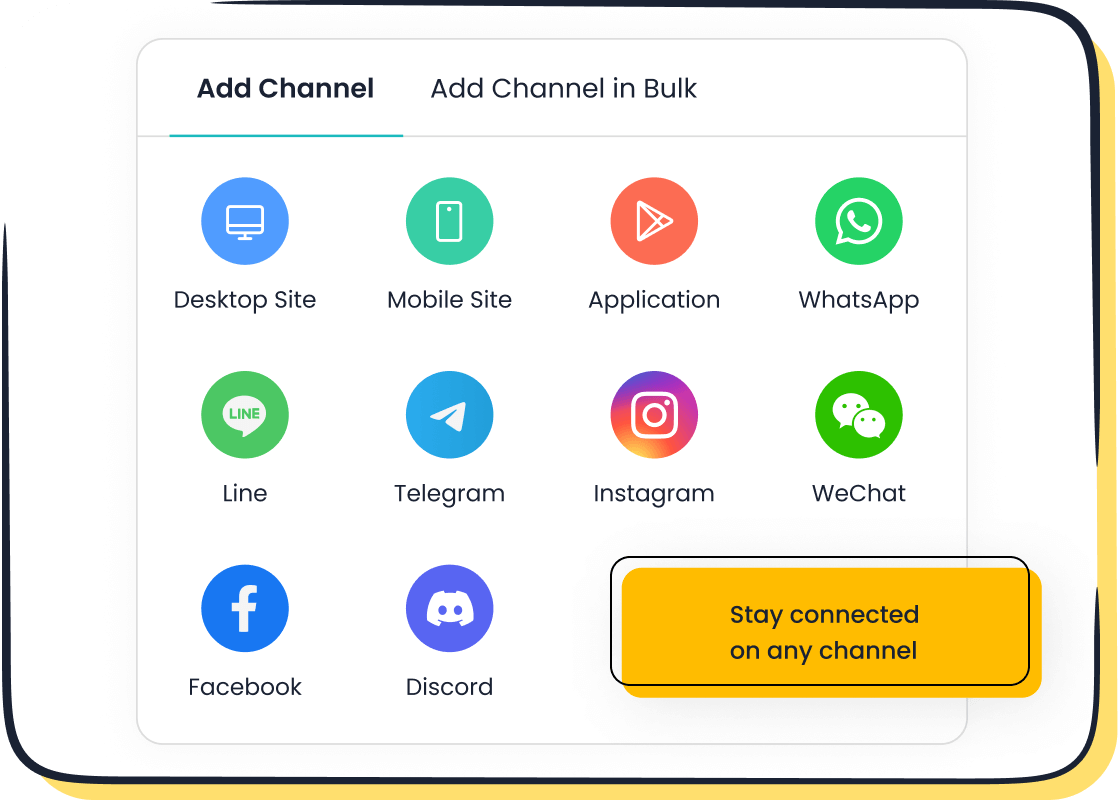
Customer support tools like Sobot enable you to scale operations seamlessly. For instance, Sobot’s omnichannel solutions consolidate interactions across platforms, ensuring no customer query gets overlooked. This unified approach allows your team to manage higher volumes while maintaining personalized service. Additionally, Sobot’s AI-powered chatbots handle repetitive tasks, freeing agents to focus on complex issues. These features not only improve productivity but also enhance the overall customer experience.
Real-world examples illustrate the impact of scaling customer support effectively:
- An e-commerce giant improved user experience and reduced cart abandonment, leading to a 15% revenue increase.
- A healthcare provider streamlined operations, achieving a 20% rise in patient satisfaction and a 10% reduction in costs.
- A tech startup used data analytics to boost user acquisition by 30% and retention by 25%.
These cases highlight how scaling customer support tools can directly contribute to business growth. By automating processes and using data-driven insights, you can support a larger customer base while identifying new opportunities for expansion.
The evolving role of Customer Success Managers also underscores the importance of scaling. With systematic approaches and automation, your team can efficiently manage relationships, prioritize key accounts, and drive long-term loyalty. Tools like Sobot’s built-in analytics provide actionable insights, helping you refine strategies and allocate resources effectively.
Scaling customer support is not just about handling more inquiries. It’s about delivering consistent, high-quality service that fosters trust and loyalty. By investing in the right tools, you can ensure your business thrives as it grows.
How to Select and Implement the Right Customer Support Tools
Assessing Business Needs and Goals
Selecting the right customer support software begins with understanding your business needs and goals. Start by defining what you aim to achieve. For example, do you want to improve response times, enhance customer satisfaction, or reduce operational costs? Clear goals will guide your decision-making process.
Next, identify specific use cases for the software. Consider scenarios like managing high ticket volumes during peak seasons or providing multilingual support for global customers. Evaluate the features of potential tools to ensure they align with these goals. For instance, Sobot’s Live Chat offers omnichannel support and AI-driven automation, making it ideal for businesses aiming to streamline customer interactions.
Here’s a quick checklist to help you assess your needs:
- What is your current baseline for customer support metrics?
- What tools are already in use, and are they meeting your needs?
- Are there any gaps in your current customer support strategy?
- How do your company’s goals align with your support team’s objectives?
| Criteria | Description |
|---|---|
| Establishing Clear Goals | Define what the organization aims to achieve with the customer support tool. |
| Defining Key Use Cases | Identify specific scenarios where the tool will be utilized to meet business needs. |
| Evaluating Tool Features | Assess the functionalities of the tool to ensure they align with the established goals. |
Budgeting and Evaluating Costs
Budgeting is a critical step in selecting customer support software. Start by analyzing your current expenses and identifying areas where you can save. Variance analysis can help you understand discrepancies between budgeted and actual costs, allowing you to make informed decisions.
To avoid overspending, establish cost thresholds for each project element. Assign a team member to oversee the budget and ensure accountability. Additionally, plan for unexpected costs by setting aside a contingency fund. For example, inflation or sudden changes in customer demand could impact your budget.
| Aspect | Description |
|---|---|
| Variance Analysis | Understanding the differences between budgeted and actual expenses is crucial for making informed business decisions. |
| Expense Variances | Reviewing general and administrative expenses can reveal specific line items that caused budget overruns or savings. |
| Adjusting Future Budgets | Regularly updating budget forecasts based on actual performance helps set clearer goals and improve financial planning. |
Regularly update stakeholders with performance reports to maintain transparency. This approach fosters accountability and ensures everyone is aligned with the financial goals.
Researching and Comparing Customer Support Software
Researching and comparing customer support software requires a systematic approach. Start by identifying key metrics to evaluate each tool. Metrics like customer satisfaction (CSAT), first response time, and resolution rates provide valuable insights into a tool’s effectiveness.
Use benchmarks to compare software performance against industry standards. For example, Sobot’s built-in analytics evaluate over 150 indicators, helping you measure and improve your customer support strategy. Additionally, consider features like integration capabilities, scalability, and user-friendliness.
| Metric Type | Description |
|---|---|
| Trends and Anomaly Detection | Analyze trends over time to identify anomalies in customer support performance. |
| Comparative Period Analysis | Evaluate performance across different time periods to identify improvements or declines. |
| Internal and External Benchmarks | Use benchmarks to compare performance against industry standards or competitors. |
Finally, read user reviews and request demos to understand how the software performs in real-world scenarios. This step ensures you choose a tool that meets your business needs and enhances customer satisfaction.
Ensuring Seamless Integration with Existing Systems
Integrating customer support tools with your existing systems is crucial for maximizing efficiency and ensuring a smooth workflow. A seamless connection between tools like Sobot Live Chat and your CRM, e-commerce platforms, or other business systems can transform your operations.
When systems work together, you can eliminate bottlenecks and improve decision-making. For example:
- Streamlined operations reduce delays and enhance productivity.
- Automated features minimize human error, improving safety.
- Fast access to accurate data enables quicker, more informed decisions.
Real-world examples highlight the benefits of integration. A leading utility company enhanced its data management processes by integrating Triofox with its infrastructure. Similarly, a robotic automation company in manufacturing achieved operational efficiency by addressing file management challenges with a remote access solution.
To ensure successful integration, follow these steps:
- Assess Compatibility: Evaluate whether the tool supports integration with your existing systems.
- Plan the Process: Develop a clear roadmap for integration, including timelines and milestones.
- Test Thoroughly: Conduct rigorous testing to identify and resolve potential issues.
- Monitor Performance: Use analytics to track the impact of integration on your operations.
Sobot’s tools, such as its omnichannel solutions, excel in integration. They connect seamlessly with platforms like Salesforce and Shopify, enabling unified workflows. This ensures your team can access customer data effortlessly, improving service quality and operational efficiency.
Training Teams for Effective Use of Tools
Training your team to use customer support tools effectively is essential for achieving the best results. A well-trained team can maximize the potential of tools like Sobot Live Chat, delivering exceptional customer experiences.
Key metrics can help you measure training success:
| Metric | Description |
|---|---|
| Customer Satisfaction | Identifies usability and design issues in training. |
| Retention and Churn | Shows the impact of training on customer retention. |
| Completion Rate | Indicates the percentage of employees completing training. |
| Support Tickets | Analyzes post-training support requests to assess effectiveness. |
For example, high course completion rates and learner satisfaction ratings indicate effective training. Additionally, tracking time spent on training modules can reveal engagement levels.
To create an impactful training program:
- Use interactive modules to keep learners engaged.
- Provide hands-on practice with tools like Sobot’s AI-powered chatbots.
- Regularly update training materials to reflect new features or updates.
Investing in training yields significant returns. For instance, if a program costs $45,000 but increases net profit by $100,000, the ROI is 122%. This demonstrates how training can directly contribute to your business’s success.
By equipping your team with the right skills, you ensure they can leverage tools effectively, improving both customer satisfaction and operational efficiency.
Future Trends in Customer Support Tools
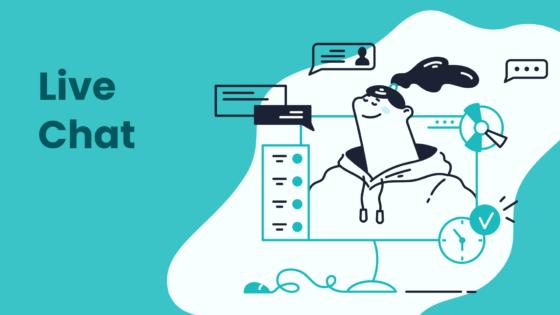
AI and Machine Learning in Customer Service Automation
AI and machine learning are reshaping customer service by automating repetitive tasks and improving efficiency. These technologies allow you to provide faster and more accurate responses to customers. For example, AI-powered chatbots can handle up to 80% of routine inquiries, freeing your team to focus on complex issues. Machine learning algorithms analyze customer interactions to predict future needs, enabling proactive support.
Sobot’s AI-driven tools, such as its ChatGPT-enabled chatbots, offer 24/7 availability and multilingual capabilities. These features ensure consistent service across time zones and languages. By integrating AI into your customer support strategy, you can reduce response times and enhance customer satisfaction. Businesses using AI have reported a 37% drop in first response times, highlighting its impact on service quality.
Omnichannel Solutions for Unified Customer Experiences
Omnichannel solutions unify customer interactions across platforms, creating seamless experiences. Customers today expect consistent service whether they contact you via email, social media, or live chat. Over 80% of consumers prefer brands that customize their shopping experience, and omnichannel strategies make this possible.
Sobot’s omnichannel solution consolidates all customer interactions into a unified workspace. This integration eliminates data silos, allowing your team to access customer information instantly. For example, the Zenyum bot managed over 25,000 new sessions and exchanged more than 900,000 messages, demonstrating the effectiveness of omnichannel engagement. Implementing these solutions can also increase conversions by 30–50%, making them essential for modern customer support.
Personalization and Predictive Analytics
Personalization and predictive analytics improve customer interactions by tailoring services to individual needs. Predictive models analyze past behavior to recommend relevant products or solutions. For instance, 91% of consumers are more likely to shop with brands that recognize and remember them.
| Statistic | Source |
|---|---|
| Personalized homepage promotions influenced 85% of consumers to make a purchase. | Monetate |
| Personalized content can reduce customer churn rates by up to 50%. | Blueshift |
| Brands that create personalized experiences see revenue increases of 6% to 10%. | Boston Consulting Group |
Sobot’s built-in analytics evaluate over 150 indicators, helping you understand customer preferences. These insights enable you to offer personalized recommendations, boosting customer satisfaction and loyalty. By leveraging predictive analytics, you can anticipate customer needs and deliver proactive support, ensuring a superior service experience.
Ethical and Sustainable Development of Customer Support Tools
Ethical and sustainable practices in customer support tools are becoming essential in 2025. As you adopt these tools, you must consider their impact on society and the environment. Ethical development ensures fairness, accessibility, and transparency, while sustainability focuses on reducing environmental harm.
One key area of ethical development is accessibility. Tools should cater to all users, including those with disabilities. For example, features like screen readers or voice commands make customer service more inclusive. Sobot integrates accessibility into its solutions, ensuring everyone can benefit from its services. This approach not only enhances user experience but also aligns with global standards for ethical technology.
Sustainability is equally important. AI-powered tools, while efficient, consume significant energy. Developers must optimize algorithms to reduce energy use. For instance, studies on the environmental impact of AI image generation highlight the need for energy-efficient designs. By choosing tools that prioritize sustainability, you contribute to a greener future.
Here are some case studies that highlight ethical and sustainable practices:
| Case Study Title | Focus Area |
|---|---|
| Chatbots and Agency | Intersection of chatbot design and personalization |
| The Environmental Impact of Generating Images with AI | Environmental consequences of AI tools |
| Kids, Exercise, and Technology | Design ethics in fitness trackers for children |
| Ethical Considerations for Disability Advocacy | Accessibility in health care and education |
When selecting tools, ask yourself: Does this tool align with my values? Does it promote ethical and sustainable practices? Sobot’s solutions, such as its omnichannel service, demonstrate how technology can balance efficiency with responsibility. By prioritizing these principles, you ensure your business supports both customers and the planet.
Adopting customer support tools like Sobot Live Chat is essential for delivering exceptional service in 2025. These tools provide 24/7 access, reduce costs, and improve customer satisfaction, as shown below:
| Benefit | Description |
|---|---|
| 24/7 Access | Customers can find help and information at any time, enhancing convenience and satisfaction. |
| Cost Savings | Decreases operational costs by minimizing the need for direct customer service interactions. |
| Improved Customer Satisfaction | Provides quick and easy access to information, leading to a better overall experience. |
To implement the right tools, follow actionable steps inspired by real-world examples:
- RGA Enterprises tracked key metrics like sales growth and customer satisfaction, reducing churn and boosting sales.
- Carson City Sheriff’s Office improved transparency and efficiency by adopting a performance management platform.
By staying updated with trends and innovations, you can ensure your customer support strategy evolves with customer expectations. Tools like Sobot Live Chat empower you to build loyalty, enhance experiences, and drive long-term growth.
FAQ
What is email support software, and why is it important?
Email support software helps you manage customer inquiries via email efficiently. It organizes messages, tracks responses, and ensures timely follow-ups. This tool is essential for businesses to maintain professional communication, improve customer satisfaction, and handle high volumes of emails without missing important messages.
How does Sobot enhance customer support?
Sobot offers tools like Live Chat and email support software to streamline customer interactions. Its AI-powered features automate repetitive tasks, enabling faster responses. For example, Sobot’s unified workspace consolidates customer data, helping agents provide personalized support. This approach improves efficiency and satisfaction.
Can email support software integrate with other tools?
Yes, most email support software integrates with tools like CRM systems and analytics platforms. Sobot’s solutions, for instance, connect seamlessly with platforms like Salesforce. This integration ensures smooth workflows and better data management, enhancing your team’s productivity.
How do user reviews help in choosing customer support tools?
User reviews provide insights into the performance and reliability of customer support tools. They highlight real-world experiences, helping you evaluate features and usability. For example, businesses often praise Sobot’s email support software for its intuitive interface and robust analytics.
What are the benefits of using email support software for customers?
Email support software ensures faster responses and organized communication. Customers experience fewer delays and more accurate resolutions. Tools like Sobot’s email support software also offer features like automated replies, ensuring customers feel valued and heard.
See Also
Enhancing Customer Support Through Effective Live Chat Techniques
Transforming Customer Support with AI-Powered Service Agents
Elevate SaaS Customer Support Using Live Chat Solutions
The 10 Most Effective Customer Service Tools for 2024
A Guide to Implementing Omnichannel Contact Center Strategies